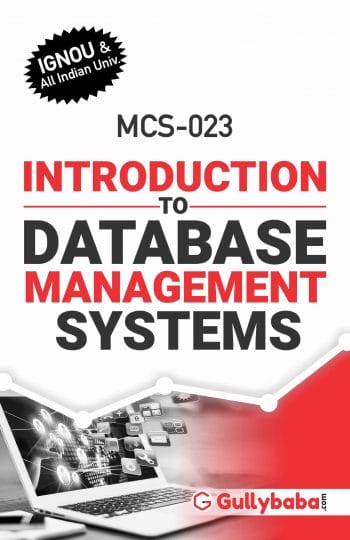IGNOU MCS-23 (July 2022 - January 2023) Assignment Questions
Q1. a) Draw and explain the detailed system architecture of DBMS.
b) With the help of a diagram, describe the concept of client/server model.
c) Explain in detail about various key constraints used in database system. Give examples for each.
d) Explain the importance of NULL values in Relational Model.
e) Discuss the mechanism of attribute relationship inheritance. How is it useful?
f) By considering an example describe various data update operations in SQL. Give examples.
g) Explain insertion, deletion and modification anomalies with suitable examples.
h) State BCNF. How does it differ from 3NF?
i) How can a database recover from failure when many transactions are going on? Describe with the help of an example.
j) What is a distributed database management system? How is it different to that of client server database systems?
Q2. Suppose you are given the following requirements for a simple database for the National Football League (NFL):
• the NFL has many teams,
• each team has a name, a city, a coach, a captain, and a set of players,
• each player belongs to only one team,
• each player has a name, a player position (such as Centre Forward, left midfield, center midfield, right midfield, left fullback, centre back etc..), a skill level, and a set of injury records,
• a team captain is also a player,
• a game is played between two teams (referred to as host_team and guest_team) and has a date (such as May 11th, 2000) and a score (such as 4 to 2).
Construct an ER diagram for the NFL database using the Chen notation with all conventions. List your assumptions and clearly indicate the cardinality mappings as well as any role indicators in your ER diagram.
Q3. Consider a “Library Management System” which keeps the following tables:
Book (isbn_no, book_title, author, publisher, edition, year_of_copyright)
BookAccession (accession_no, isbn_no, date_of_purchase)
Members (m_id, m_name, m_address, m_phone).
Issue_return (accession_no, m_id, expected_date_of_return, actual_date_of_return)
Please note that a member can be issued a book for a period of 15 days. The actual-date-of-return is kept blank for the books that have not been returned. Write and run the following SQL queries on the tables:
(i) Find the m_id and m_name of the members who have got maximum number of unreturned books.
(ii) List the book details along with the number of copies for that book in the library (issued or not-issued both)
(iii) Find the names of all those students who have got all the books issued to him of the author named “ABC” .
(iv) Find the books that are expected to be returned in this week.
(iv) Find those members who have not got any book issued to him/her during last six months.
Make suitable assumptions, if any.
Q4. Consider the Relation R={A, B, C, D, E, F, G } and the set of functional dependencies.
A→F B→CD C→G F→E
What is the key for R? With the help of a suitable example discuss the Insertion, Deletion and Updation anomalies which can arise if the relation is not in 2NF and 3NF ? Decompose R into 2NF, 3NF and finally in BCNF relation.
Buy MCS-23 Assignment 